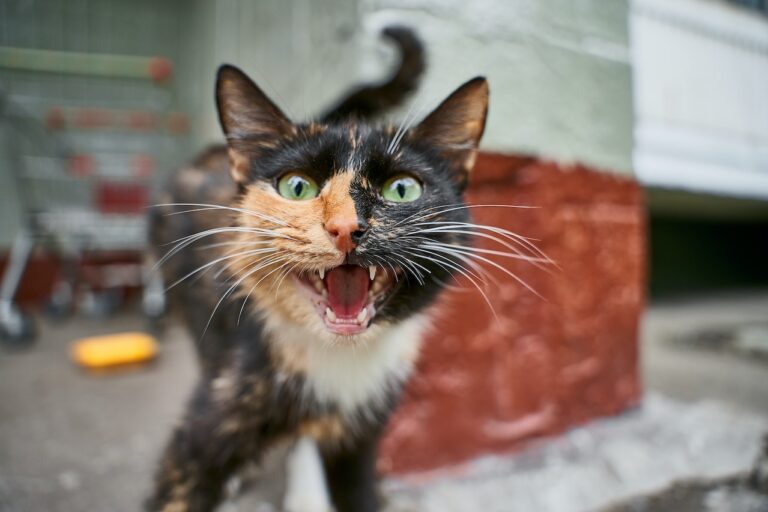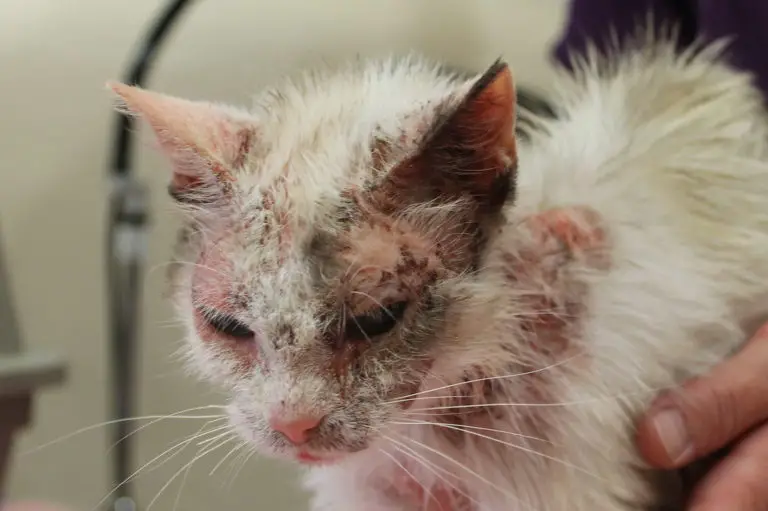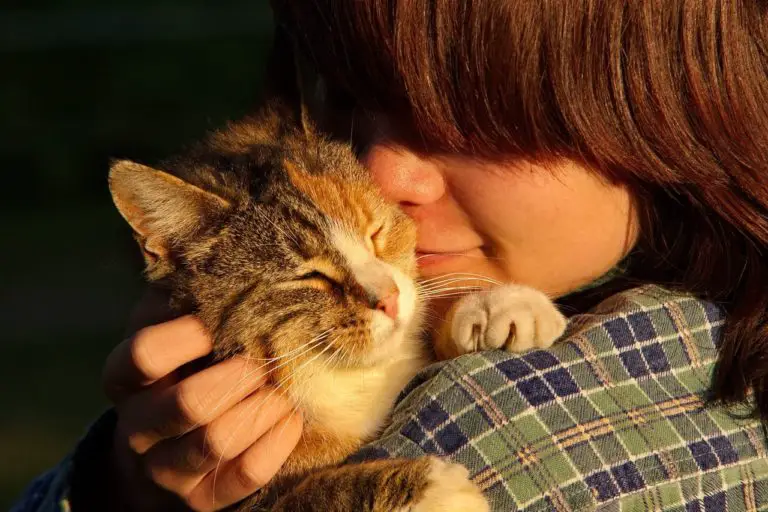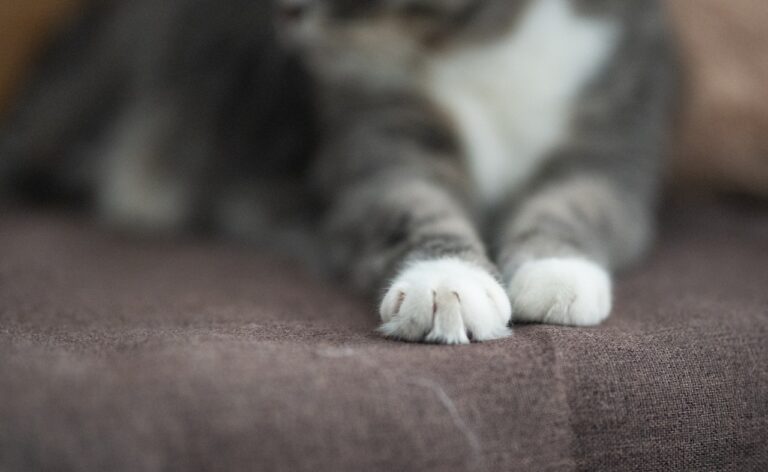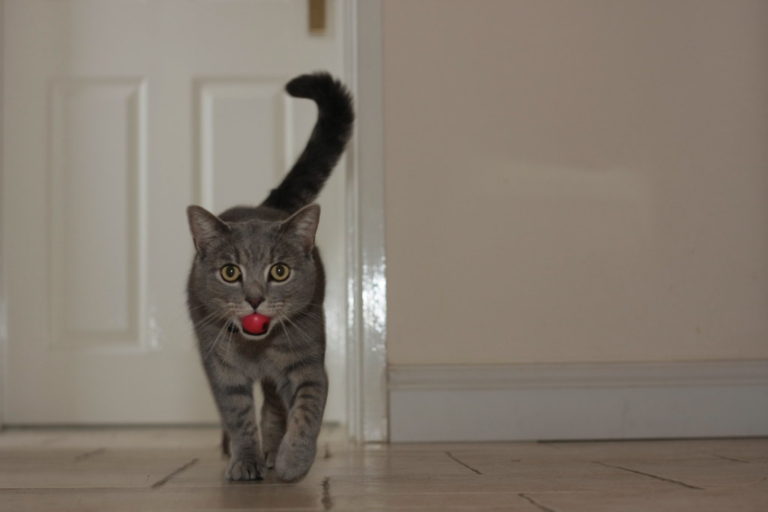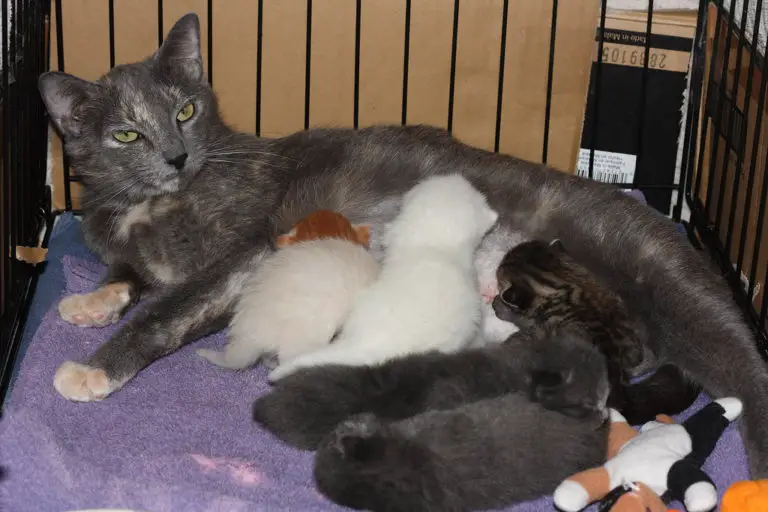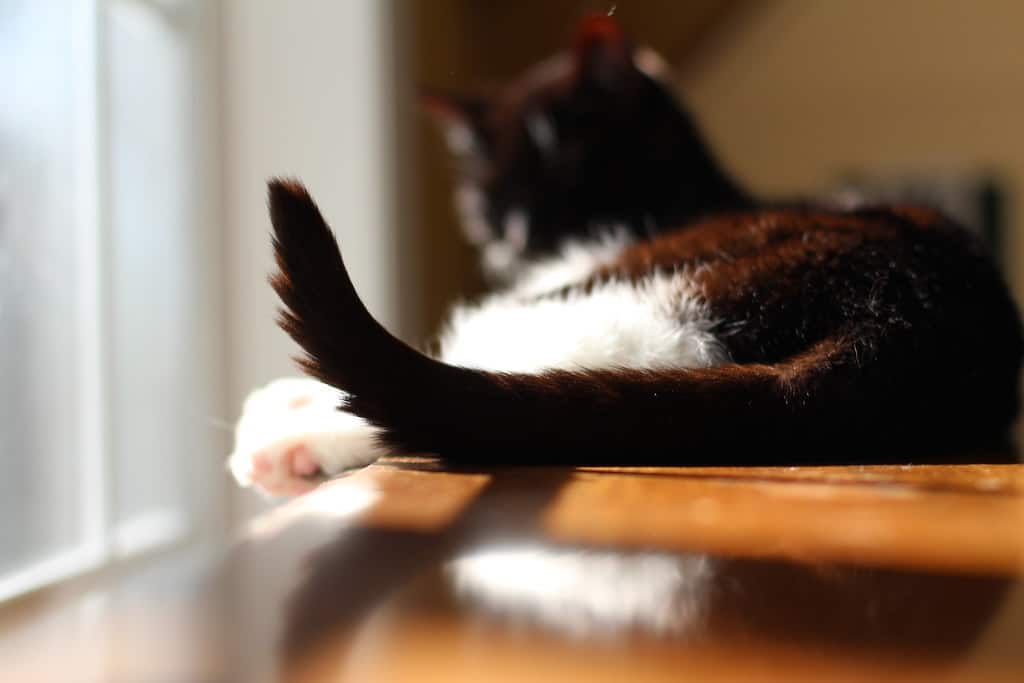
Cat tails are a very interesting part of their anatomy, and many people wonder if cats are conscious of their tails. The answer is yes, they are.
Cats do not consciously control their tails in the way we do when we scratch an itch or pat our head. But they do seem to know that their tails are there, and they use them as part of their body language.
Some cats even hold their tail straight out in front of them when they’re feeling playful. The same thing happens when you stand up on a chair with your legs spread wide apart and your arms stretched out in front of you, showing off your muscles and chest hair while someone else holds you up by the shoulders (they call this “the chicken dance”).
Cats use their tails to communicate with other cats — including other members of their own species — and to signal aggression toward other animals that are too strong for them to fight with paws alone.
A cat who feels threatened may arch its back, curl its lips back over its teeth, stretch its ears flat against its skull, stick out its claws forward toward the intruder and even hiss loudly, all behaviors that indicate aggression toward another animal within range of vision.
Do Cats Move Their Tail on Purpose?
Cats do not move their tail on purpose. Cats can however, move their tail with the intent to communicate with other cats.
Cats’ tails are one of the most important parts of their body. They use it to communicate with other cats, and they also use it to help them balance. However, there may be a reason why cats’ tails move when they do.
A cat’s tail is made up of vertebrae, which are connected by ligaments and tendons. When your cat moves his tail, he is moving the muscles that control its motion. These muscles contract and relax in order to make your cat move his tail.
Cats usually do move their tails on purpose. They may not get to do it all the time, but when they do, it’s because they know you’re watching and want you to pay attention. The tail is a signal that says “Hey, I’m with you!”
Why would a cat want to signal its presence? The short answer is that it needs to take care of business — like peeing or pooping — and keeping a clean tail helps them get back in shape after a trip outside. It’s also important for social reasons, since other cats will be able to tell how healthy your cat’s skin is based on its fur quality.
Do Cats Have Feeling in Their Tails?
Cats have no feeling in their tails, but they do like to use their tails as a kind of communication device.
Cats can flick their tails at other cats, people and objects in order to communicate their moods or intentions.
If your cat’s tail is flicking out of the blue, it may just be that he’s bored or wants attention. However, if your cat’s tail is wagging more than usual, he could be trying to tell you something important — especially if it keeps wagging even though there are no threats or dangers in sight.
If you’re concerned about a sudden twitching of your cat’s tail, look for signs that indicate she’s not feeling well: An unkempt coat with matted fur; eyes that are bloodshot or glassy; lack of appetite; runny nose; sneezing; coughing or vomiting; fainting spells; diarrhea; excessive thirst or urination outside the litter box.
If these symptoms are present, it’s best to take her to the veterinarian immediately because they could indicate some serious medical problem such as pneumonia or seizures (due to head trauma).
In addition to showing signs of being unwell, cats often twitch their tails when they’re playing with other cats in a social setting.
Why Do Cats Flick Their Tails When Lying Down?
Cats’ tails are a very important part of their body, and they may flick them when they lie down. This is not only normal but also quite cute. It’s really just a way for cats to stretch out their muscles.
Cats have long been known to flip their tails when they’re feeling relaxed or sleepy. It’s a way for them to hide their faces from predators, such as hawks or eagles.
There may be several reasons why cats flick their tails when lying down:
Cats want to show off how much of a bad cat they can be! They do this by flicking their tails back and forth in short spurts.
Cats are trying to get rid of excess heat from the sun or other warm temperatures. They do this by flicking their tails back and forth rapidly.
When cats are playing with each other, they may flick their tails at each other in fun and games.
Why Do Cats Attack Their Tails?
Cats are social and playful animals. They love to play with each other, but sometimes this can be dangerous for the cat. If a cat is playing with its tail in an unsafe way, it could get hurt in the process.
Cats have a natural instinct to attack tails because they are used as weapons in their battles. Cats will also use their tails to swat at flies or insects that may bother them while they sleep.
A cat’s tail can be broken if it is not handled properly, so if your cat is constantly attacking his tail and you don’t think he’s doing it on purpose, it may be time for him to see the vet for treatment.
It’s common for cats to attack their tails in order to determine if another cat is a threat or not. In some cases, it may simply be a reaction to stress or fear. But if your cat is attacking his tail every time he sees another cat nearby, you may have a serious problem on your hands.
Why Do Cats Have Tails?
Cats have tails because they are descended from jungle cats. These cats, which looked very different from modern-day house cats, had tails and short legs. The short legs were needed to balance on the branches of trees while hunting.
Cats are still able to climb trees, but they do so much less frequently than they used to because they can more easily get food in the grassy areas around homes and farms.
The tail is not just for balance; it also provides a cushion when cats land on hard surfaces such as tile floors or concrete patios. Cats’ tails contain a lot of blood vessels that help them keep cool by dissipating their body heat through their tails.
Cats are not born with tails. It is a trait that develops during development of the embryo in the womb. The tail develops from an embryonic structure called the neural crest (a nerve cell cluster).
During development, each section of the neural crest migrates along its own pathway in the embryo, with some migrating toward the back and others toward the front of the body; these sections will become different parts of the cat’s body.
As these sections migrate toward their final destinations in different directions, each will develop into a different part of a cat’s anatomy.
Cats also have tails for one simple reason: it’s easier for them to balance themselves on them. They also use their tails for balance when climbing and jumping, so you may notice that your cat has a tendency to jump from something into your arms or off furniture with its tail straight up in the air.

